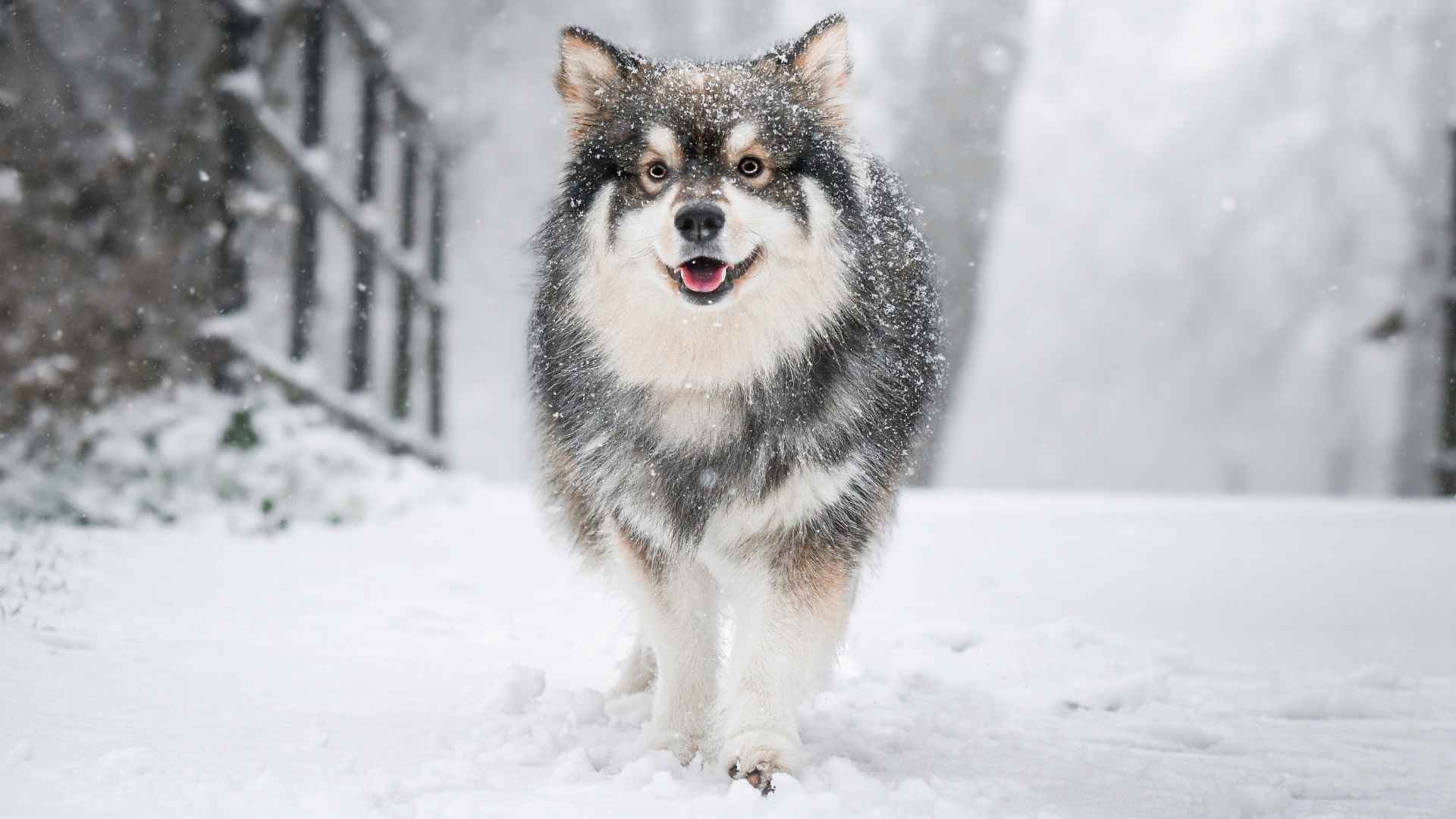The sky turns white, breath clouds up, and frost creeps across the windows. You layer up, step out, and your dog freezes in place, refusing to take a step. It’s winter again, and not every dog is built for it.
Some can’t last five minutes in the cold without shivering. Others, though? They thrive. But that’s not what this is about just yet. This is about how winter changes your routine.
Long walks feel shorter. Playtime outdoors disappears. Your dog hides under blankets, and you’re left wondering if things could be easier. A better fit.
If you’ve ever had to carry your dog across snow-covered sidewalks or skip a walk because the cold was too much, you’re not alone. Here, we’ll explore dog breeds that handle winter like second nature. So let’s start!
Dog Breeds That Tolerate Cold Winters
1. Samoyed
Samoyeds originated with the nomadic Samoyedic people of Siberia, where temperatures regularly fell below –40°C. AKC states that they were used as sled dogs, reindeer herders, and camp guardians—performing all three roles even in blizzard conditions. Their stamina wasn’t optional—it was survival.
Dense Insulation System
Their iconic white fur is more than just striking—it’s a thick double coat engineered to trap warmth. The outer layer resists snow buildup, while the dense undercoat holds heat near the skin. Even when lying on ice, their body temperature remains stable.
High Tolerance for Harsh Conditions
What sets Samoyeds apart is how long they can remain outdoors without discomfort. They remain alert and agile even when exposed to wind chill that grounds most other breeds. No boots, no jackets—just biological design working perfectly.
Physiology Suited for Snow
Everything from their paws to their metabolism is adapted for deep winter terrain. Their footpads have a texture that grips slick surfaces, and their body conserves energy during long exposure. They exemplify the traits that define cold-weather dog breeds at their most functional.
2. Bernese Mountain Dog
The Bernese Mountain Dog was developed in high-altitude farms where snow and wind weren’t occasional—they were constant. These dogs hauled carts and stood guard in subzero temperatures without hesitation. Their large frame adds bulk that naturally holds body heat.
Dense Coat, Subtle Protection
They have a thick, long, and layered coat that provides reliable insulation against freezing air. Snow tends to rest on the surface without melting quickly, helping them stay comfortable during prolonged exposure outdoors.
Cold-Energy Efficiency
Berners are deliberate movers in winter terrain, saving energy without losing focus. Their stride adjusts naturally on icy ground, offering better balance on uneven or slick surfaces. That control helps prevent injury even during work in deeper snow.
Winter Comfort Over Strain
You’ll often find them lying contentedly in snowbanks while other breeds seek shelter. They’re not enduring the cold—they’re at ease in it. This comfort level stands out among cold-weather dogs, especially in long, rural winters.
3. Tibetan Mastiff
Bred in the Himalayas, the Tibetan Mastiff carries a dense undercoat that insulates during subzero nights, as stated in Dog Academy. Its body conserves heat efficiently, even when snow accumulates on its fur without melting. That’s a biological response, not just physical endurance.
Energy Regulation in Winter
This breed limits unnecessary movement to preserve energy in freezing conditions. You’ll notice measured pacing rather than restless activity—a survival trait in regions where calories were scarce. It’s winter efficiency, not laziness.
Protective Yet Reserved
Its temperament remains steady through storms, which is why it’s long been trusted as a guardian dog, as per PDSA. Instead of reacting to every sound, it waits, observes, and then acts if needed. That selective awareness is invaluable during long winter nights.
Cold-Weather Independence
Few breeds are this self-sufficient when left outdoors for hours in extreme cold temperatures. While most dogs seek constant shelter, the Tibetan Mastiff manages its exposure calmly. Even wind-whipped snow doesn’t disrupt its rhythm if it has space and purpose.
4. Norwegian Elkhound

The Norwegian Elkhound has a tightly packed undercoat that traps body heat, even when temperatures drop below freezing. Its outer coat sheds snow and light rain with ease, allowing it to stay dry during long periods outdoors. This insulation remains effective even during active movement.
Keeps Moving in Harsh Weather
It maintains energy and alertness during long walks in snow-covered terrain without slowing down. The breed was historically used to follow game across frozen ground, often covering miles in a single day. Their physical endurance aligns well with extreme seasonal shifts.
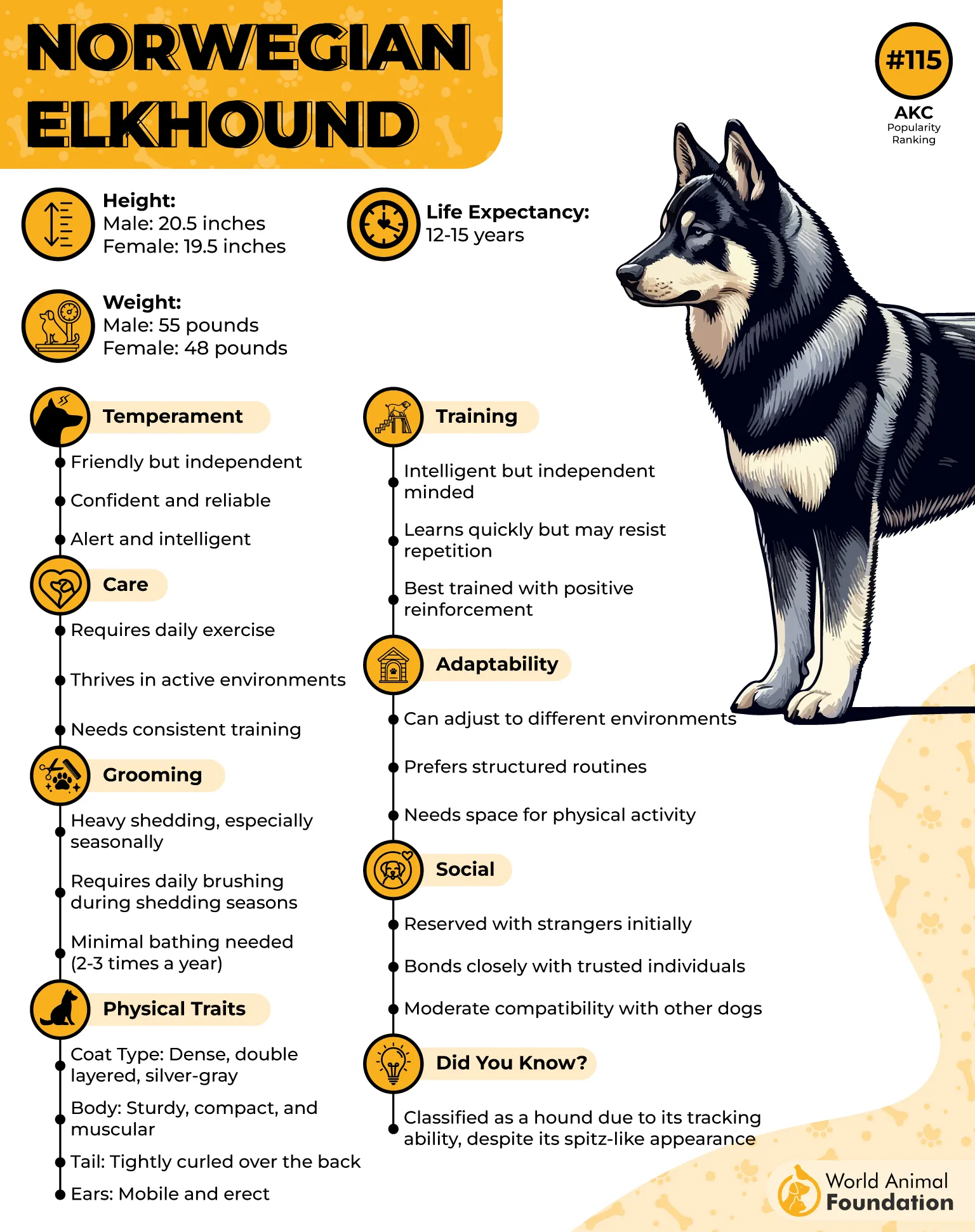
Cold Adaptation Without Fuss
Elkhounds manage exposure with minimal shelter, often preferring to rest outside rather than indoors. The tail curls in tight during sleep to reduce heat loss—a natural behavior developed through years of environmental adaptation. These dogs adjust quickly to shifts in air temperature.
A History Rooted in Snow
As an ancient breed from Western Norway, it was developed to function year-round in cold climates, as Britannica stated. Their role in hunting large game through winter landscapes required physical resilience and a calm mindset. These traits remain unchanged in today’s Elkhounds living in colder regions.
5. Finnish Lapphund

The Finnish Lapphund’s dense, double-layered coat evolved in the unforgiving regions of Lapland, where wind chill is routine. Its harsh outer layer repels snow while the softer undercoat insulates the body. This design allows them to stay active even in deep sub-zero temperatures.
Movement Without Hesitation
Their feathered paws grip snowpack with surprising agility, keeping traction on icy terrain. Originally bred to herd reindeer, they’re built for cold mobility, not just survival. They don’t slow down when temperatures drop; they function normally where many others would hesitate.
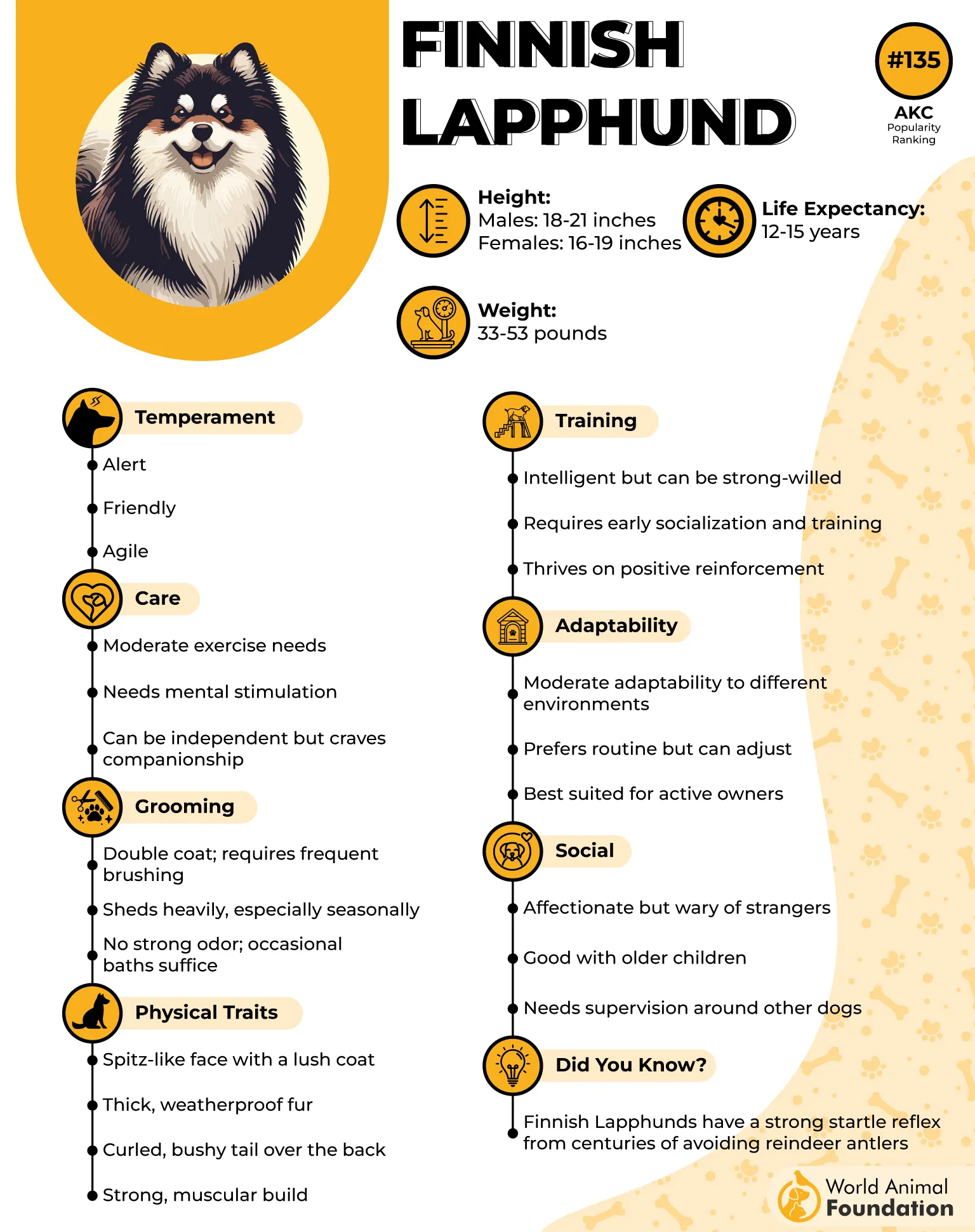
Naturally Calm in Harsh Conditions
Sudden drops in temperature or long spells of frost don’t disrupt their routine or temperament. They continue to rest, explore, and engage without needing indoor refuge. This stability makes them one of the more reliable cold-weather breeds to live alongside in extreme climates.
Trusted Companion for Active Environments
A well-socialized Lapphund integrates smoothly into routines where mobility and resilience are essential. For a dog owner who needs a dog warm enough to join winter hikes or chores, this breed holds its own without needing special accommodations. It’s built for outdoor living, and it shows.
6. Saint Bernard
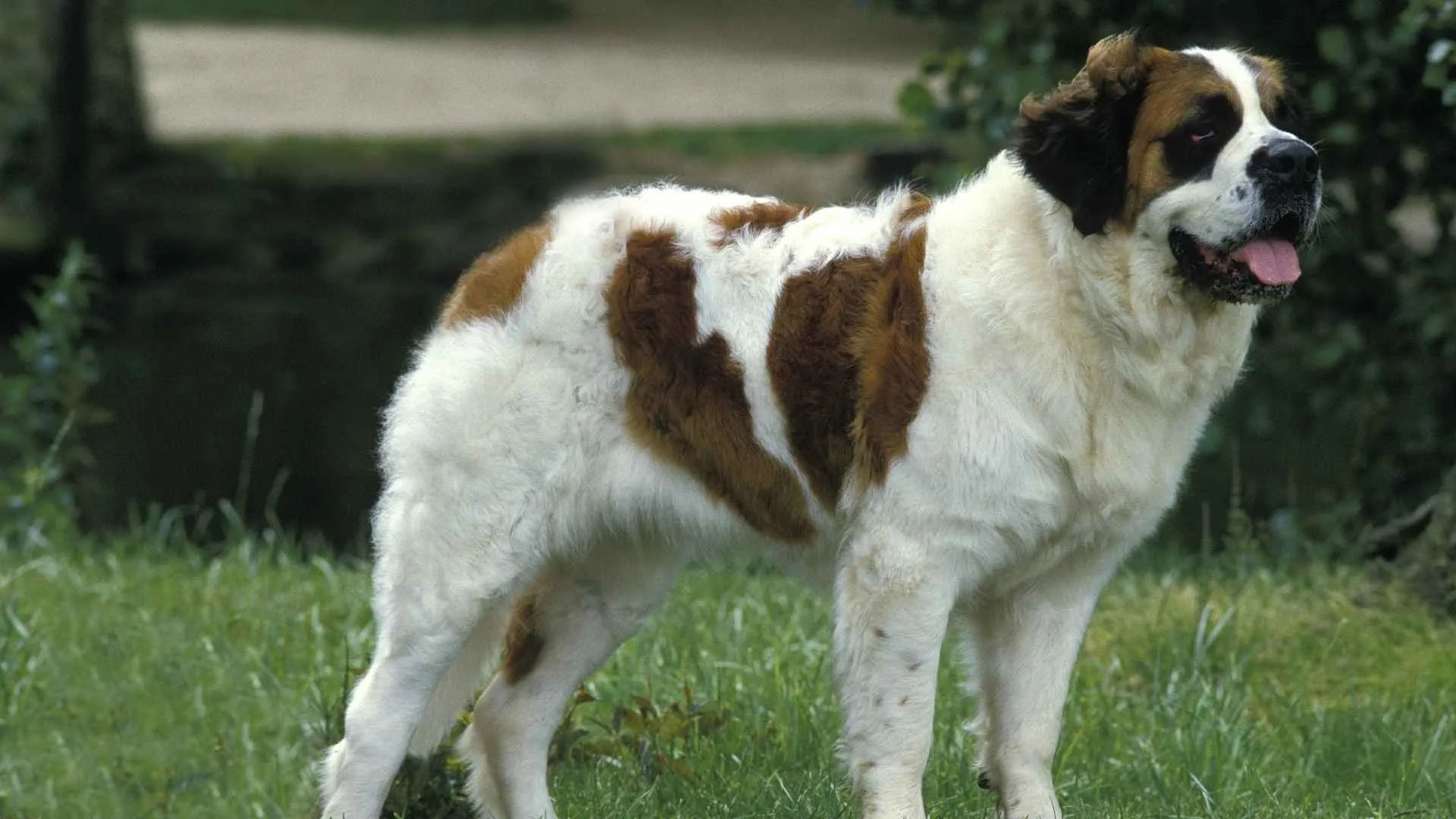
Saint Bernards were bred by monks in the Swiss Alps to locate travelers buried under snow, which required precise navigation in whiteout conditions. Their broad chests and powerful limbs were adapted to push through deep drifts. That functional history still shapes their ease in frozen terrain today.
Physical Structure Made for Frost
Dense undercoats trap warmth even during extended exposure, and their skin produces natural oils that repel moisture. The structure of their paws helps distribute weight on snow without sinking. These traits allow them to quietly endure long hours in chilly weather without discomfort.
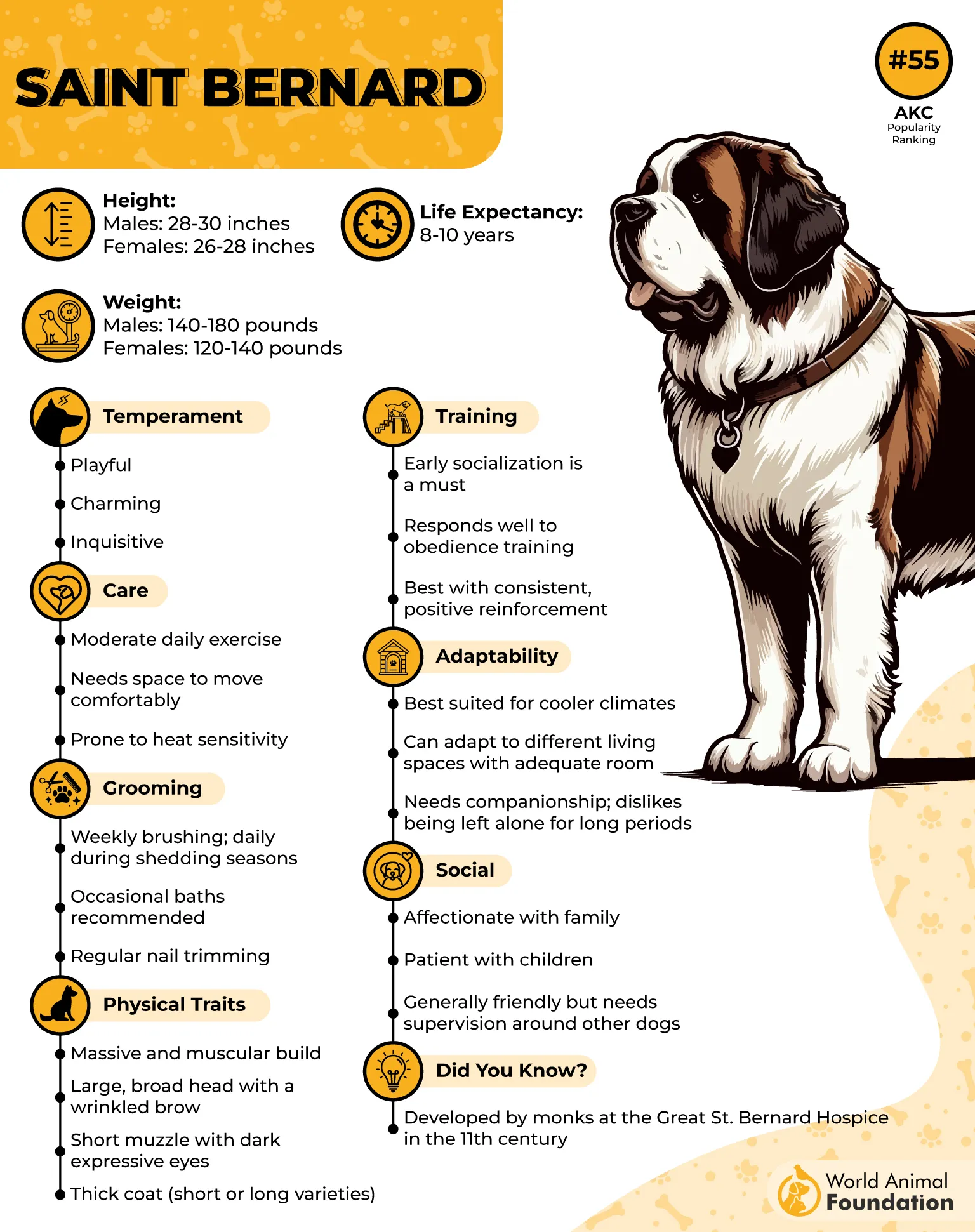
Calm Energy in Icy Surroundings
They don’t panic when storms roll in—this breed maintains composure through noise, wind, and isolation. Even in shifting climates, they regulate their energy levels instead of overexerting. This restraint preserves body heat while preventing exhaustion in brutal environments.
Natural Fit for Cold-Tolerant Roles
As one of the most popular breeds in alpine rescue history, Saint Bernards have a proven ability to tolerate cold weather consistently. Their presence alone brings steadiness to winter routines, whether navigating snowy trails or resting beside a mountainside cabin.
7. Siberian Husky
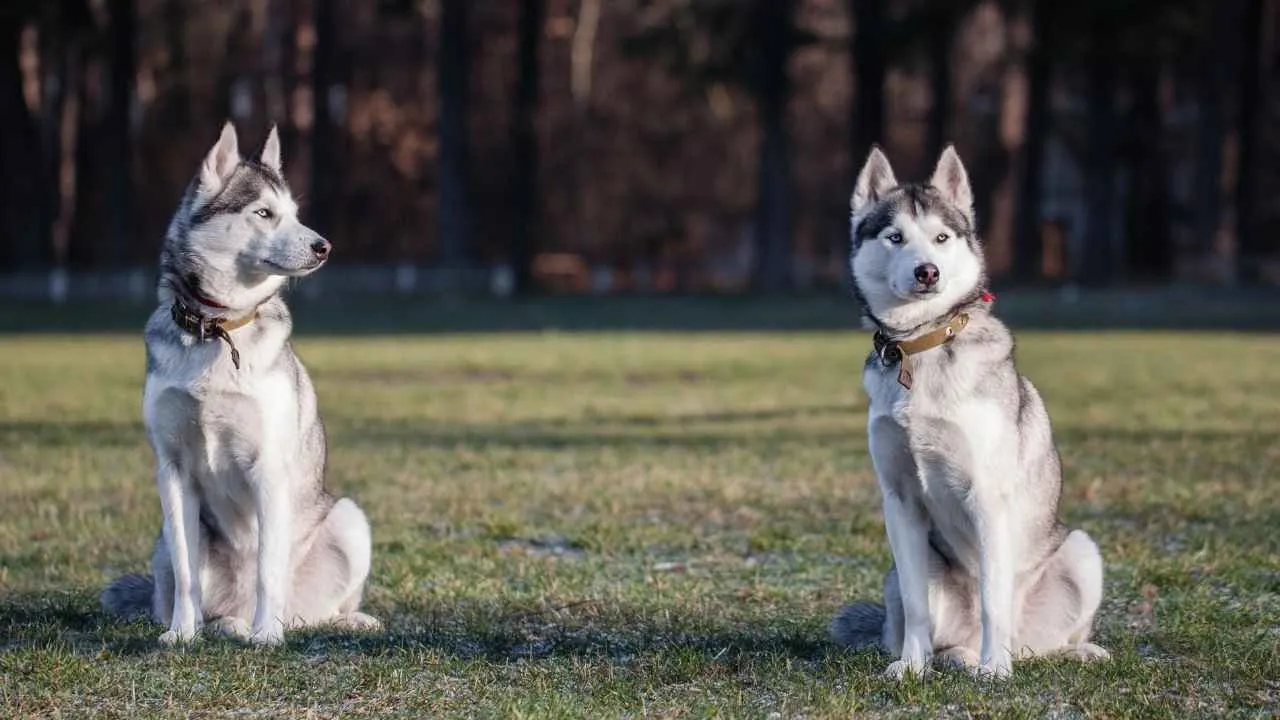
The Siberian Husky’s dense double coat doesn’t just provide insulation, but it also regulates airflow, allowing them to cool during exertion and retain heat in stillness, as highlighted by Hound Therapy. Their almond-shaped eyes reduce frost accumulation. These are not showy traits—they’re survival adaptations.
Movement That Generates Warmth
They’re bred to keep moving across long distances without tiring, even in deep snow. Their gait is efficient, conserving energy while warming their muscles steadily. This makes them comfortable staying active even in long, cold spells.
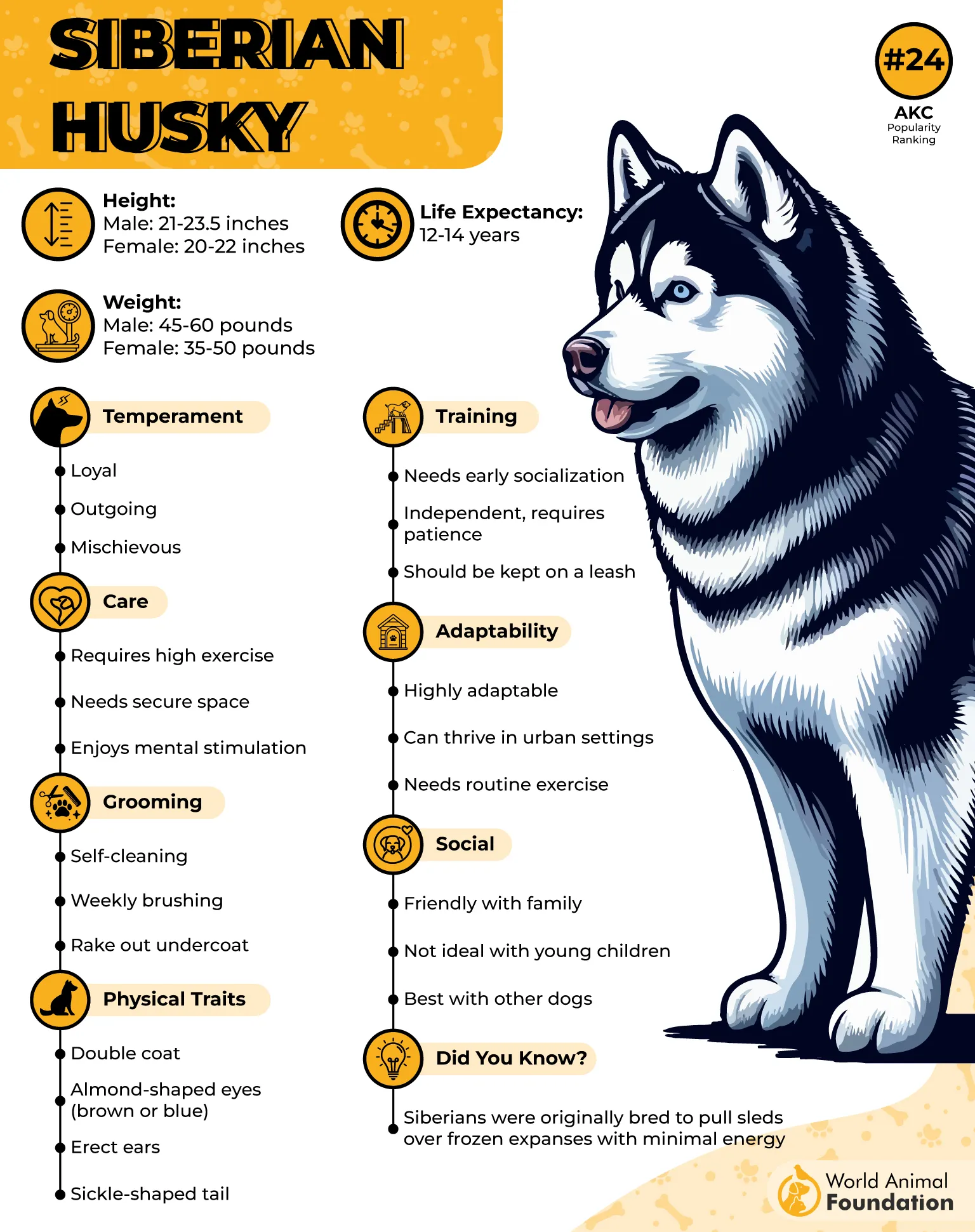
Paws Designed for Harsh Surfaces
Each paw has tough pads and a slight webbing between toes that acts like snowshoes. It helps them grip icy surfaces and move smoothly across crusted terrain. Cracking or cold sensitivity is rare in properly cared-for Huskies.
Cold Weather Behavior Patterns
Huskies don’t curl up tightly indoors—they’ll often lie belly-down on snow, even during freezing temperatures. They dig shallow craters to shield themselves from the wind, showing how instinctual cold management is for them. Their comfort in the cold isn’t learned—it’s embedded.
8. Alaskan Malamute
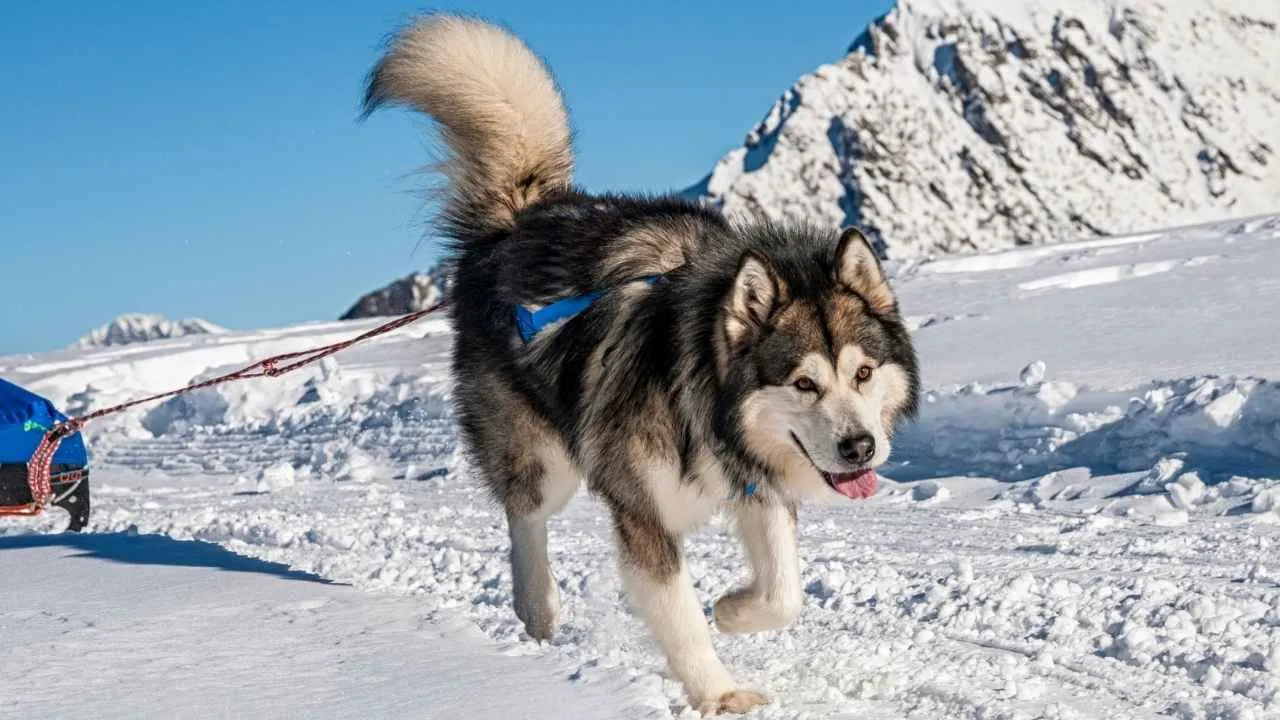
Alaskan Malamutes have a compact undercoat that can reach up to two inches thick, helping them retain warmth even in deep snow. Their coarse topcoat resists moisture and blocks wind without trapping wetness close to the skin. This coat structure allows them to stay outdoors longer in freezing temperatures.
Energy Built for Cold-Climate Travel
This breed was bred to haul heavy loads across icy routes for extended periods without tiring. Their muscles generate heat gradually, which keeps them warm without overheating. They conserve energy through efficient, steady movement rather than sudden bursts.
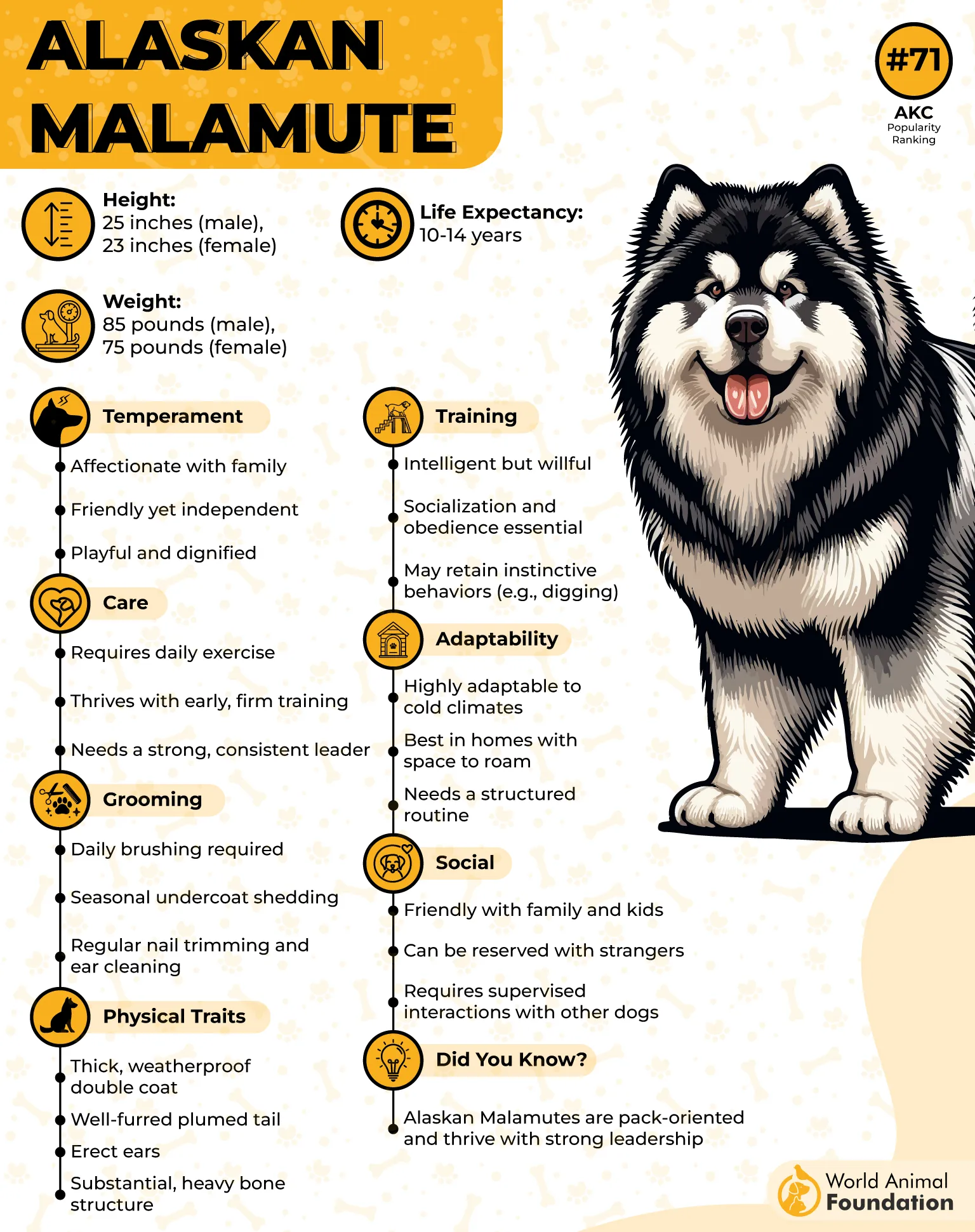
Feet Adapted to Snowy Terrain
Their broad paws spread their weight evenly across soft snow, preventing them from sinking during travel. Fur grows between their toes, shielding them from ice buildup and giving extra grip. These foot traits help them stay balanced and mobile across frozen ground.
Calm Demeanor in Harsh Environments
Malamutes remain focused and steady, even when visibility drops or storms roll in. They don’t panic in harsh conditions and stay near their team or handler. That calm reaction is part of what made them reliable working dogs in some of the world’s coldest regions.
9. Great Pyrenees
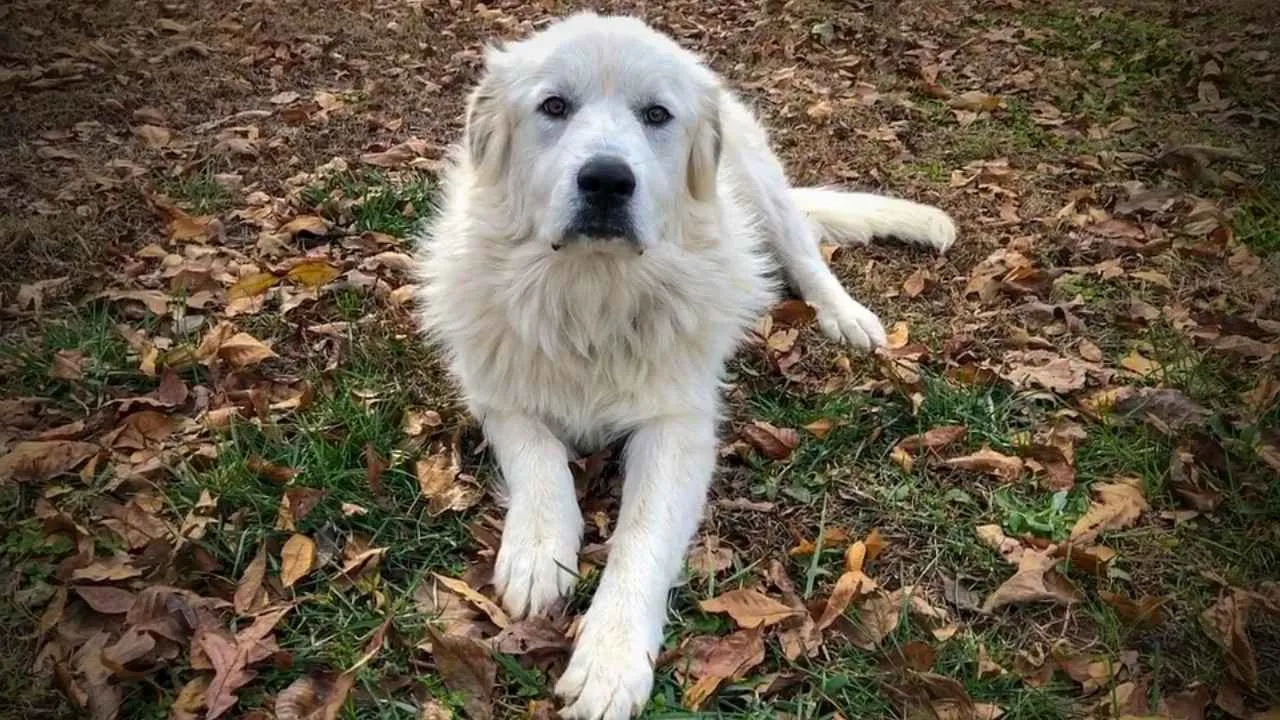
The Great Pyrenees developed in mountain climates where snow covers the ground for months. Their thick double coat insulates against deep cold and even deflects wind chill. Ice crystals often settle on their fur without reaching the skin beneath.
Stillness in Subzero Conditions
They conserve energy through calm, still posturing—an instinct shaped by high-altitude winters. This quiet endurance helps them stay outside for extended hours, even during deep freezes. Movement is deliberate, never wasteful, making them efficient in harsh weather.
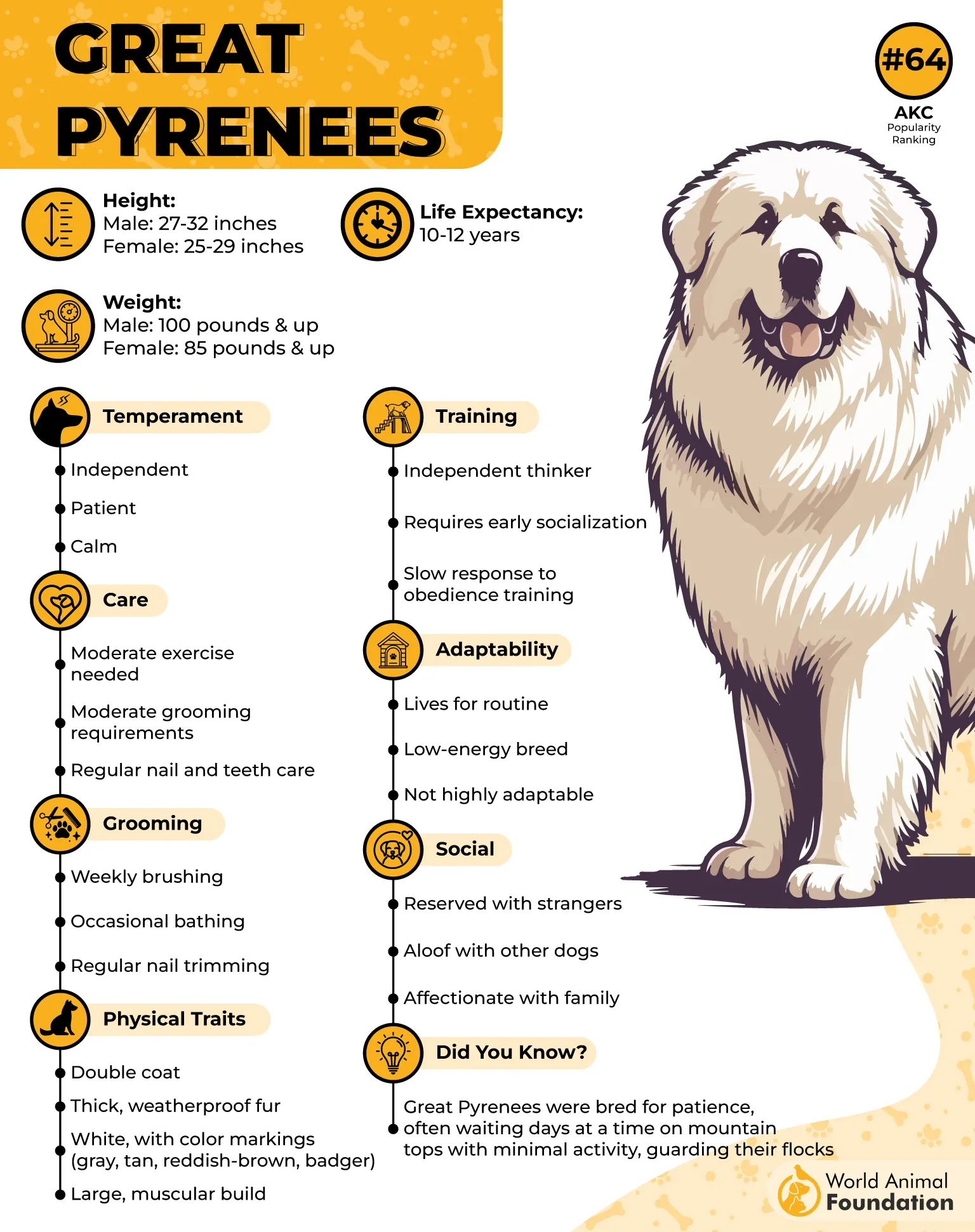
Night Watch in Snowy Terrains
Bred to guard livestock overnight in winter pastures, their circadian rhythm is naturally tuned to nighttime vigilance. They navigate snow-covered ground with slow confidence, staying aware of distant motion or scent changes. Snow doesn’t distract; it sharpens their alertness.
Body Mass That Holds Heat
Their sheer body size allows for better thermal retention, reducing the loss of body heat in freezing air. Large paws distribute weight evenly across the snow, reducing sink. In colder months, they tend to eat more, not from boredom, but to fuel temperature regulation.
Conclusion
Cold winters don’t have to be a constant challenge—not for you, and not for your dog. Choosing the right breed means choosing comfort, safety, and peace of mind when temperatures drop. The best dogs for winter all have something in common: a natural ability to adapt.
Whether it’s a thick coat, cold-resistant paws, or calm energy in a snowstorm, these traits matter more than fashion or size. Even some small dogs can surprise you with how well they tolerate frost, while others with thin coats may need more help.
You can always add layers or dog booties, but you can’t force comfort that isn’t built in. These aren’t just snow-loving pets—they’re companions well suited to help you enjoy the season instead of avoiding it.
When you find a dog that matches your climate, winter becomes less of a burden and more of an adventure—for both of you.


